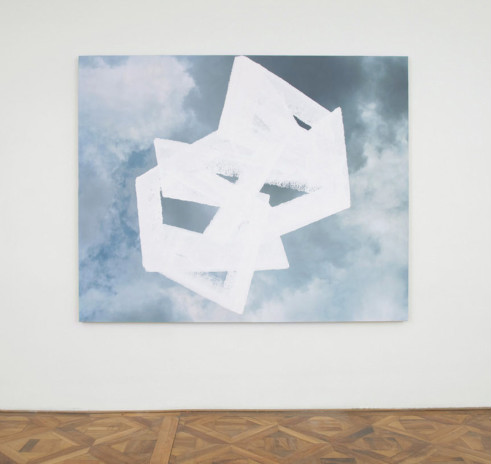James Hyde
Thursday, 22 September 2011
Work from Inhere.
“James Hyde’s paintings and objects are not about the act of seeing or about the world, but how they interact. Each painting is a membrane of the encounter between self and world. Its form can be understood as a perspective on to the world as much as a demonstration of how we perceive it. Hyde’s photographs are sediments of his looking. With the addition of a layer of abstract painting over the photography, both are transformed, the abstract as well as the imagistic layer. Of the things that the photographs describe– their materialism, their ornamentation, their surface structure– all are emphasized as aesthetic appearance. The painterly abstractions, on the other hand, are turned into images as they begin to interact with the imagistic layer of the photographs, even to become part of an imaginary pictorial space.
“As a painter”, Hyde says, “I’m concerned with the processes of how painting is constructed and recognized. I try to keep this narrative legible – making the actions of coating, covering, marking, or folding distinct as gestures so that they are both an action and a description of an action.” For this reason, Hyde focuses on the greatest possible tension between the heterogeneity of the single image components and the unity of the pictorial-painterly effect. Hyde maximizes the tension between heterogeneity and homogeneity. This means that he is not interested with only the one or the other, but in the transfer between the two; in the possibility that as things drift apart they might transform into something belonging together only to fall apart into singular elements a moment later. This experience is paradox:suddenly we see Hyde’s images differently – as merged together or disparate – even though we recognize in the sameinstant that nothing in them has changed. Tension is also essential for the interpretation of the English verb “to inhere”, which Hyde has chosen as a title for the exhibition, meaning that something is integral to another thing or that one clings to another. The abstract forms of Hyde’s painting are adhered from the outside to the photographs and, by extension to the visual contents– and yet they are also inherent to the picture, as soon as, in our perception,they become part of an imaginary pictorial place.
Hyde states that his art is about observation. His works become a means of observation because they allow us to observe our method of observation. As we get involved with this observation of observation something happens to the components of images– something that is also part of our perception of the world. In the moment of perception,the subject and the world – which are usually two completely separated entities – merge together. But even as we become aware of this merging within Hyde’s works, there is also the worldly truth that this experience of merging can only ever be a very short one, until subject and world fall apart once more.” – Michael Lüthy, translated from German March 2011



